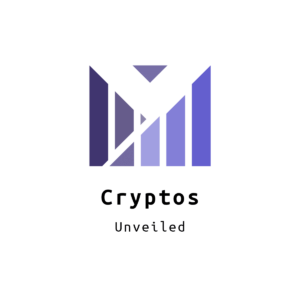Overview of Bullish, the Block.one-Backed Cryptocurrency Exchange Set to Go Public
Bullish, a hybrid cryptocurrency exchange supported by Block.one, is making headlines as it prepares for a public listing on the New York Stock Exchange (NYSE) with backing from notable investors and industry experts. Although the exchange has yet to launch its trading platform, it has revealed plans for a public debut valued at $9 billion, which represents 10% of Coinbase’s valuation at its Nasdaq launch. This ambitious move has generated significant interest in both the cryptocurrency and traditional financial markets, positioning Bullish as a potential unicorn.
Development of a Hybrid Exchange
On May 11, 2021, Block.one, the creator of the EOS.IO protocol, announced the upcoming launch of Bullish, a hybrid exchange designed to merge decentralized and centralized trading systems for enhanced performance. The vision behind Bullish is to create a trading environment where automated market making and traditional order book functionalities coexist, aiming to overcome the inherent limitations found in both centralized exchanges and decentralized exchanges (DEXs). The leadership envisions this hybrid model will provide Bullish with a competitive edge in the market.
Strategic Features and Unique Selling Points
Bullish aims to deliver a trading experience characterized by high and reliable liquidity, regulatory compliance, and blockchain-enabled transparency. While there have been previous attempts to create hybrid crypto platforms, Bullish’s launch is particularly noteworthy due to the excitement and anticipation surrounding it. Prior to the announcement in May, there were no signals that Block.one intended to establish an exchange utilizing EOS-IO blockchain technology for ensuring transparency and auditability. Remarkably, the project already secured $10 billion in funding and attracted a roster of distinguished investors.
Funding and Investor Support
The initial funding for Bullish was primarily derived from Block.one’s capital contributions, which included 164,000 BTC, 20 million EOS, and $100 million in cash. An additional $300 million was raised through a private funding round that featured well-known investors such as Peter Thiel’s Thiel Capital and Founders Fund, Richard Li, Christian Angermayer, Alan Howard, Louis Bacon, Galaxy Digital, and the global investment bank Nomura.
Plans for Public Listing and Leadership Structure
Shortly after securing funding, Bullish announced its intention to go public through a merger with Far Peak Acquisition, a special purpose acquisition company (SPAC) led by Thomas Farley, a former president of the NYSE. As part of this merger, Farley is set to become the CEO of Bullish, while Brendan Blumer, the CEO of Block.one, will take on the role of chairman. This rapid transition has propelled Bullish from obscurity to one of the most valuable cryptocurrency exchanges in a matter of weeks.
Expansion of Investor Base and Pilot Program
In an interesting development, SB Northstar, the investment division of SoftBank, contributed $75 million to Bullish in July 2021, further expanding its investor base. By the end of July, Bullish initiated a private pilot program designed to test its services, allowing selected participants to engage with certain features of the exchange using simulated cryptocurrencies and paper money. This testing phase is scheduled to run from July 27, 2021, to September 13, 2021.
Key Features of Bullish Exchange
Below are some of the main functionalities Bullish intends to introduce:
**Hybrid Order Book:** Bullish aims to blend automated market maker features with those of a centralized exchange to create a unique hybrid order book capable of deep liquidity. This means the platform will utilize both liquidity pools and order book systems to satisfy the liquidity needs of institutional clients.
**Lending Tool:** Upon launch, Bullish will allow users to lend funds to margin traders, enabling additional earning opportunities.
**Portfolio Management Tool:** The exchange will offer an interface for users to track their portfolios, including trade performance, assets in liquidity pools, and those available for margin trading.
**Robust Security Infrastructure:** Bullish is committed to implementing strong security measures, utilizing cryptographic techniques to secure transactions. All transactions will be recorded on the EOS public blockchain, ensuring verifiability, and the platform will support password-free authentication via WebAuthn protocols.
**Yield Earning Service:** To encourage users to contribute funds for margin trading, Bullish will implement a reward system that allows participants to earn returns on their deposits.
**Regulatory Compliance:** Bullish aims to offer fully compliant exchange services, which it believes will attract institutional traders. The exchange states its intention to be completely regulated and licensed in Gibraltar, although the implications of its public listing on these plans remain uncertain, especially regarding U.S. regulatory oversight.
**Scalable Infrastructure:** The hybrid model adopted by Bullish is designed to ensure both speed and liquidity, which are paramount for the platform’s success.
Addressing Skepticism and Challenges
Despite the excitement, some skeptics have raised concerns about the swift pace at which Bullish is evolving. The exchange’s intent to go public before launching a live trading platform has led to questions about its readiness. However, the involvement of respected investors like Peter Thiel and Thomas Farley lends credibility to the initiative and suggests that Bullish is presenting a compelling value proposition.
Considerations on Block.one’s History
Another point of discussion revolves around Block.one’s past. The company raised over $4 billion during the 2017 Initial Coin Offering (ICO) of EOS, which was touted as a potential competitor to Ethereum. However, four years later, EOS has not fully realized this potential, which raises concerns about the trustworthiness of Block.one’s current projects.
Conclusion: The Future of Bullish
Bullish’s strategy to merge decentralized exchange features with traditional trading methods holds the promise of success, but only time will reveal whether it can fulfill this potential.

